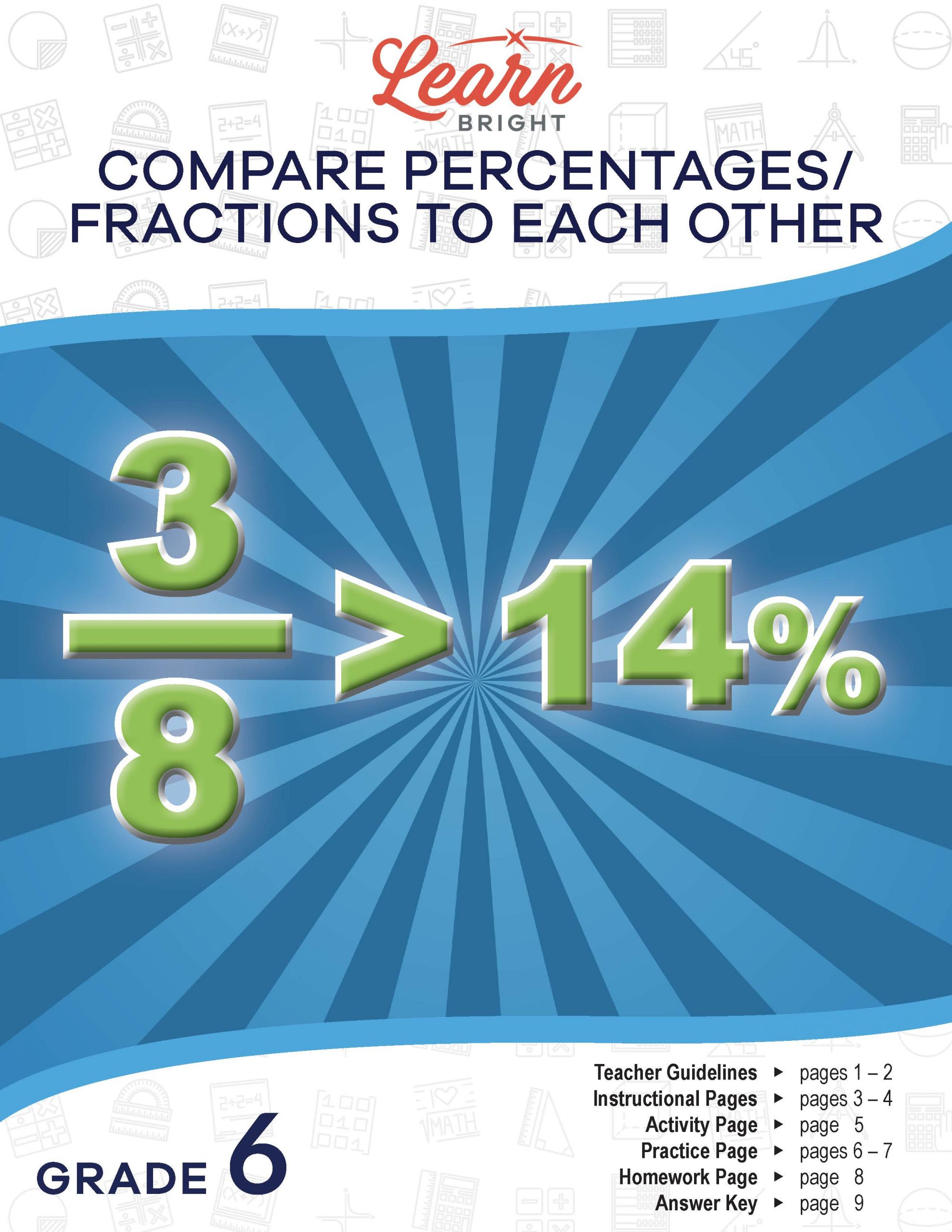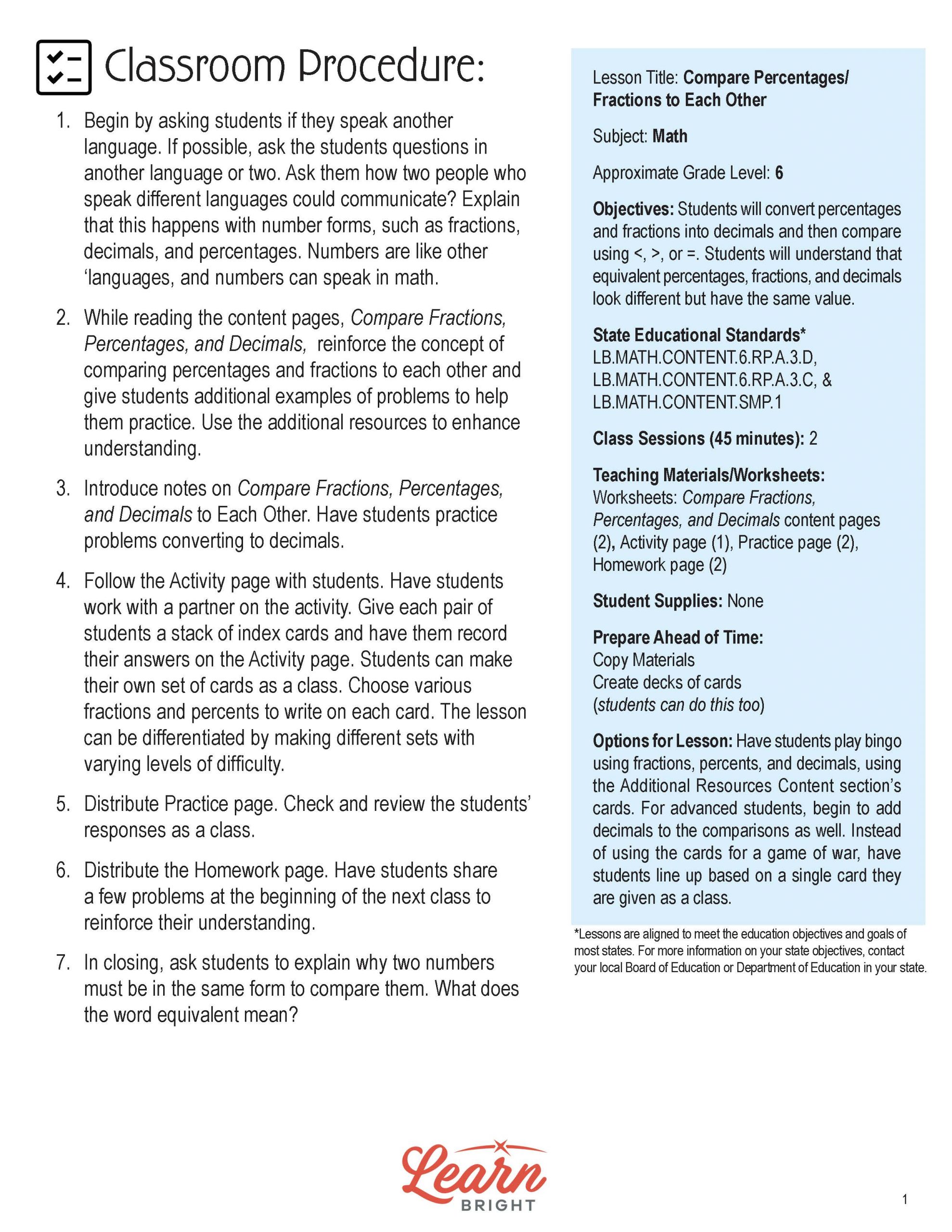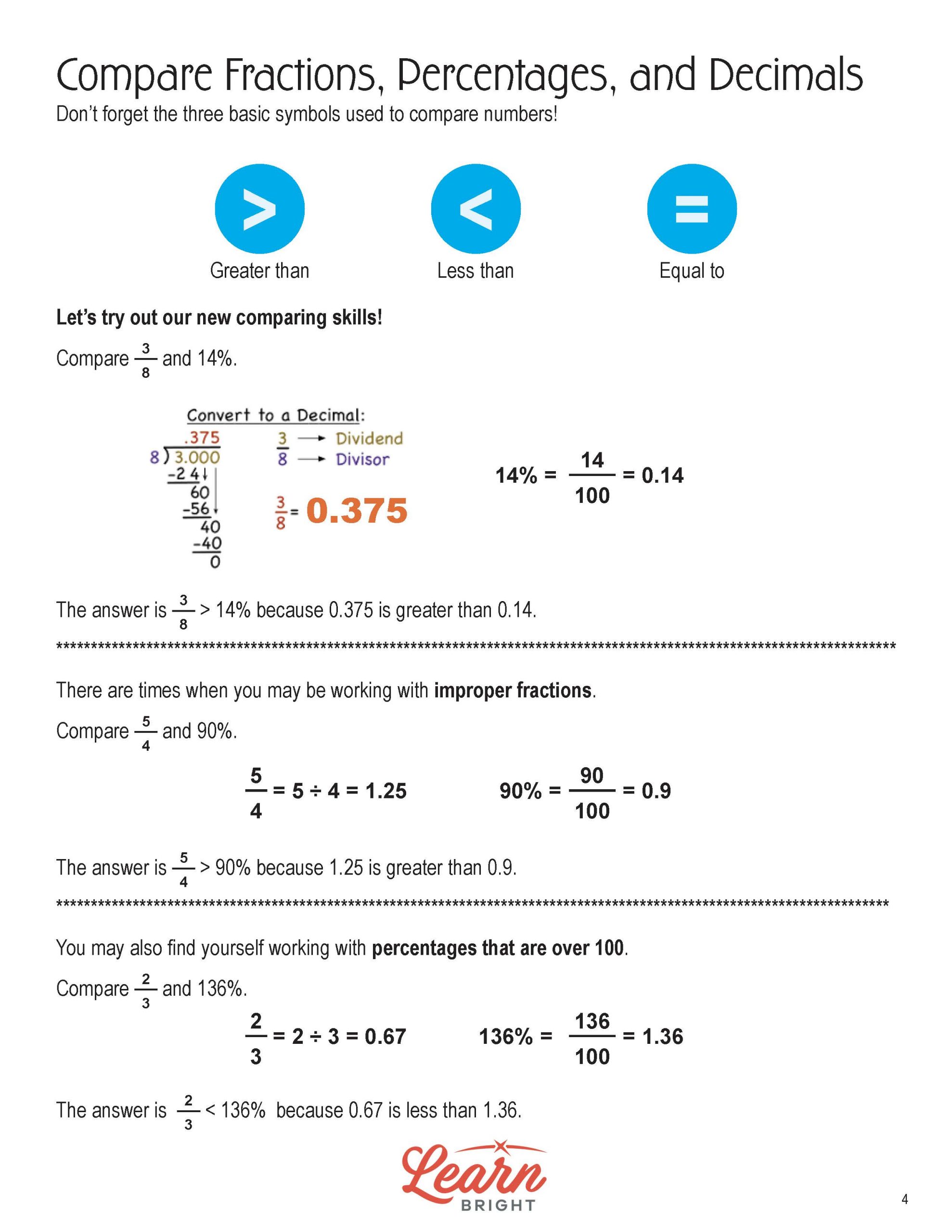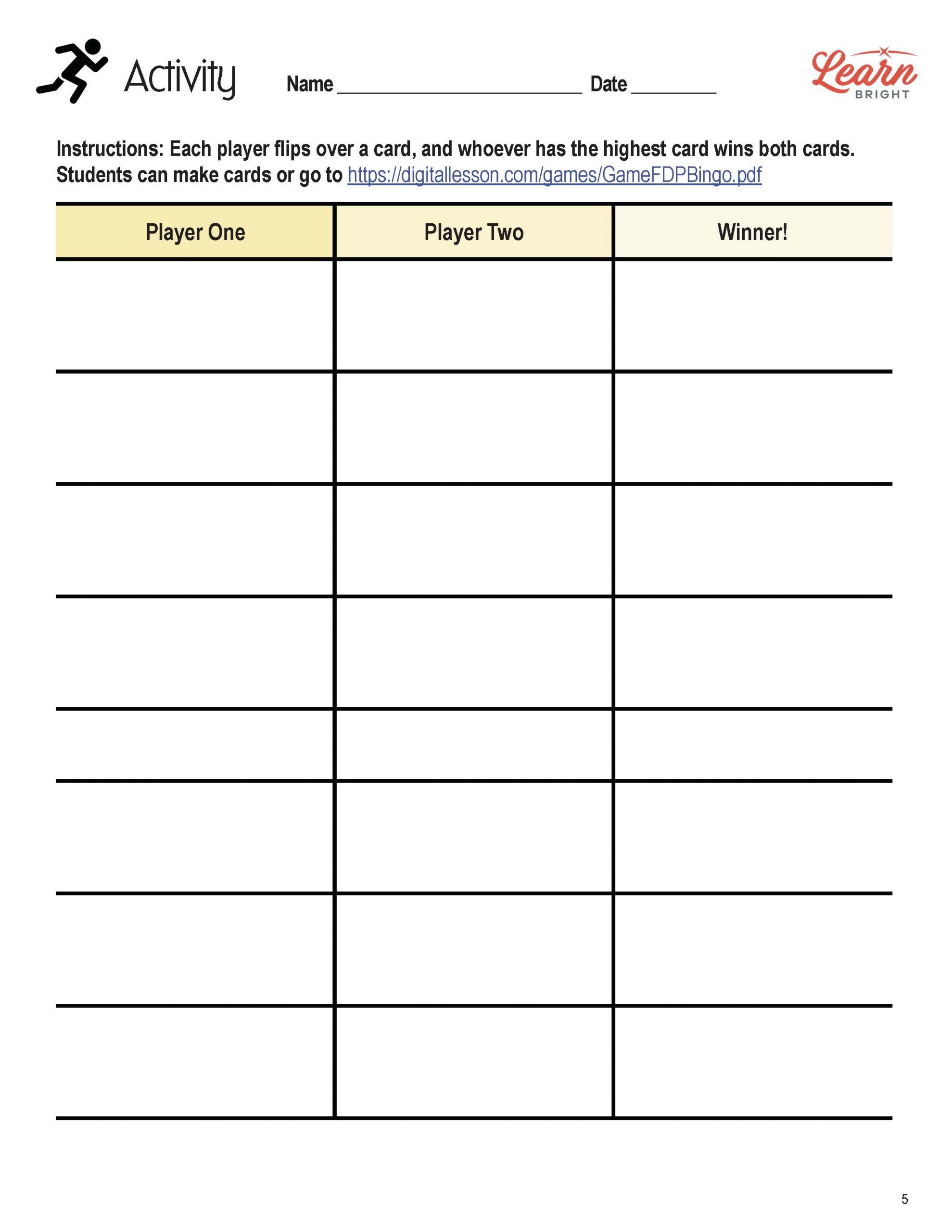Description
What our Compare Percentages and Fractions to Each Other lesson plan includes
Lesson Objectives and Overview: Compare Percentages and Fractions to Each Other teaches students how to convert percentages and fractions to decimals and then compare and order them. They also learn why it is important to convert numbers to the same form when comparing and ordering. At the end of the lesson, students will know how to convert percentages and fractions into decimals and then compare using <, >, or =. Students will also understand that equivalent percentages, fractions, and decimals look different but have the same value. This lesson is for students in 6th grade.
Classroom Procedure
Every lesson plan provides you with a classroom procedure page that outlines a step-by-step guide to follow. You do not have to follow the guide exactly. The guide helps you organize the lesson and details when to hand out worksheets. It also lists information in the blue box that you might find useful. You will find the lesson objectives, state standards, and number of class sessions the lesson should take to complete in this area. In addition, it describes what and how you need to prepare beforehand.
Options for Lesson
Included with this lesson is an “Options for Lesson” section that lists a number of suggestions for activities to add to the lesson or substitutions for the ones already in the lesson. One of the optional additions to this lesson is to have your students play bingo using fractions, percents, and decimals, using the cards from the Additional Resources Content section of the lesson. If you have more advanced students, you can begin to add decimals to the comparisons as well. Finally, instead of using the cards for a game of war, you can have your students line up based on a single card they are given as a class.
Teacher Notes
The teacher notes page includes a paragraph with additional guidelines and things to think about as you begin to plan your lesson. This page also includes lines that you can use to add your own notes as you’re preparing for this lesson.
COMPARE PERCENTAGES AND FRACTIONS TO EACH OTHER LESSON PLAN CONTENT PAGES
Compare Percentages and Fractions to Each Other
The Compare Percentages and Fractions to Each Other lesson plan includes two pages of content. The lesson begins by telling students that when they want to compare two numbers, those numbers must be in the same form. Each form of number basically speaks a different language. They need to speak the same language (be in the same form) to communicate. In the case of the equations in this lesson, you convert percentages and fractions into decimals to compare them easily.
Converting a Fraction to a Decimal
To convert a fraction into a decimal, you divide the numerator by the denominator using either long division or a calculator. The lesson includes an example.
Converting a Percent to a Decimal
To convert a percent into a decimal, you first write the percent as a fraction and then divide the numerator by the denominator using the same method as above. You can also take a percent and move the decimal point two places to the left to quickly convert it to decimal form. The lesson also includes an example of this.
It may seem like it would be easier to convert the percent to a fraction and compare (or vice versa), but it’s not. In order to compare two fractions, they need the same denominator. Making both numbers have a denominator often takes longer than converting both numbers to a decimal.
It’s also important to remember the three symbols we use to compare numbers: > (greater than), < (less than), and = (equal to). The lesson closes with three example problems that students can review to learn more.
COMPARE PERCENTAGES AND FRACTIONS TO EACH OTHER LESSON PLAN WORKSHEETS
The Compare Percentages and Fractions to Each Other lesson plan includes three worksheets: an activity worksheet, a practice worksheet, and a homework assignment. You can refer to the guide on the classroom procedure page to determine when to hand out each worksheet.
CARD GAME ACTIVITY WORKSHEET
For the activity worksheet, students will play a game with a partner where they take turns flipping over cards. Whoever has the higher card wins both cards. Whoever ends up with the most cards at the end wins!
SCHOOL SURVEY PRACTICE WORKSHEET
The practice worksheet asks students to look at a table with school survey results from a survey about what activities different students want to do in gym class. They will then answer questions about the results using equations to compare two numbers (>, <, or =).
COMPARE PERCENTAGES AND FRACTIONS TO EACH OTHER HOMEWORK ASSIGNMENT
For the homework assignment, students will answer 14 problems that include percentages and fractions using <, >, or =.
Worksheet Answer Keys
This lesson plan includes answer keys for the practice worksheet and the homework assignment. If you choose to administer the lesson pages to your students via PDF, you will need to save a new file that omits these pages. Otherwise, you can simply print out the applicable pages and keep these as reference for yourself when grading assignments.









